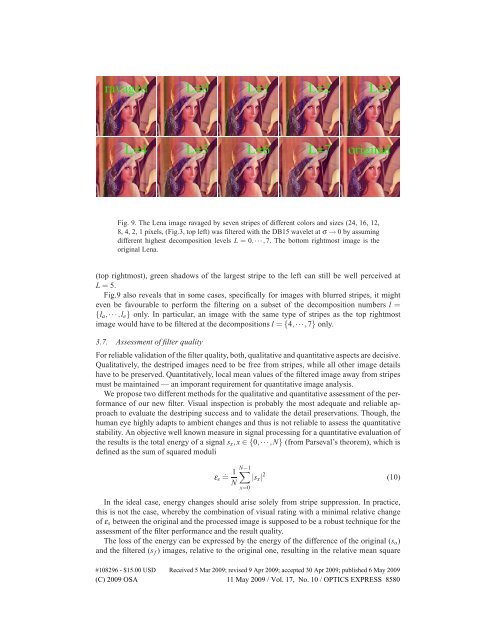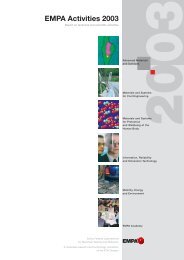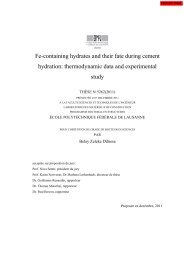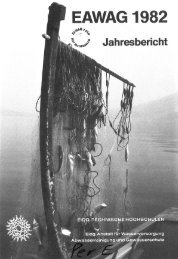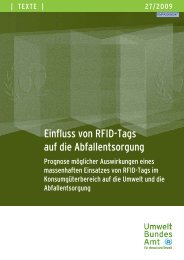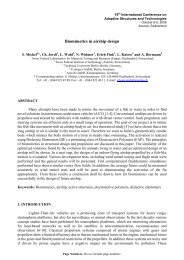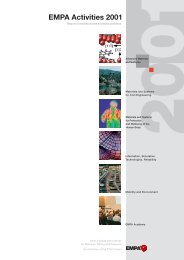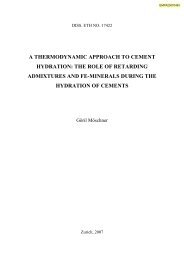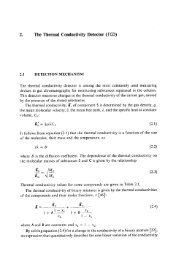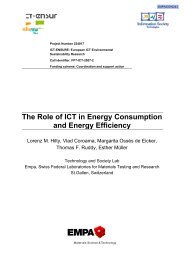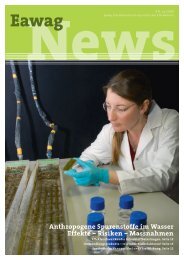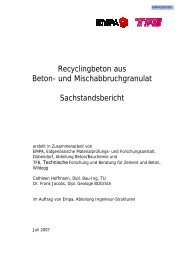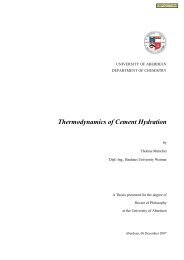Stripe and ring artifact removal with combined wavelet — Fourier ...
Stripe and ring artifact removal with combined wavelet — Fourier ...
Stripe and ring artifact removal with combined wavelet — Fourier ...
Create successful ePaper yourself
Turn your PDF publications into a flip-book with our unique Google optimized e-Paper software.
Fig. 9. The Lena image ravaged by seven stripes of different colors <strong>and</strong> sizes (24, 16, 12,<br />
8, 4, 2, 1 pixels, (Fig.3, top left) was filtered <strong>with</strong> the DB15 <strong>wavelet</strong> at σ → 0 by assuming<br />
different highest decomposition levels L = 0,···,7. The bottom rightmost image is the<br />
original Lena.<br />
(top rightmost), green shadows of the largest stripe to the left can still be well perceived at<br />
L = 5.<br />
Fig.9 also reveals that in some cases, specifically for images <strong>with</strong> blurred stripes, it might<br />
even be favourable to perform the filte<strong>ring</strong> on a subset of the decomposition numbers l =<br />
{la,···,le} only. In particular, an image <strong>with</strong> the same type of stripes as the top rightmost<br />
image would have to be filtered at the decompositions l = {4,···,7} only.<br />
3.7. Assessment of filter quality<br />
For reliable validation of the filter quality, both, qualitative <strong>and</strong> quantitative aspects are decisive.<br />
Qualitatively, the destriped images need to be free from stripes, while all other image details<br />
have to be preserved. Quantitatively, local mean values of the filtered image away from stripes<br />
must be maintained <strong>—</strong> an imporant requirement for quantitative image analysis.<br />
We propose two different methods for the qualitative <strong>and</strong> quantitative assessment of the performance<br />
of our new filter. Visual inspection is probably the most adequate <strong>and</strong> reliable approach<br />
to evaluate the destriping success <strong>and</strong> to validate the detail preservations. Though, the<br />
human eye highly adapts to ambient changes <strong>and</strong> thus is not reliable to assess the quantitative<br />
stability. An objective well known measure in signal processing for a quantitative evaluation of<br />
the results is the total energy of a signal sx,x ∈ {0,···,N} (from Parseval’s theorem), which is<br />
defined as the sum of squared moduli<br />
<br />
εs . = 1<br />
N−1<br />
|sx|<br />
N<br />
x=0<br />
2<br />
In the ideal case, energy changes should arise solely from stripe suppression. In practice,<br />
this is not the case, whereby the combination of visual rating <strong>with</strong> a minimal relative change<br />
of εs between the original <strong>and</strong> the processed image is supposed to be a robust technique for the<br />
assessment of the filter performance <strong>and</strong> the result quality.<br />
The loss of the energy can be expressed by the energy of the difference of the original (so)<br />
<strong>and</strong> the filtered (s f ) images, relative to the original one, resulting in the relative mean square<br />
#108296 - $15.00 USD Received 5 Mar 2009; revised 9 Apr 2009; accepted 30 Apr 2009; published 6 May 2009<br />
(C) 2009 OSA 11 May 2009 / Vol. 17, No. 10 / OPTICS EXPRESS 8580<br />
(10)


